Introduction
Virtual live events refers to converting recorded video files, devices, or network streams into live broadcasts and pushing them to live streaming platforms. For example, in e-commerce live streaming, you can pre-record product explanations and demonstrations. In educational live streaming, you can pre-record lessons and play them in the live classroom. For online speeches and sharing, you can play pre-recorded content in the live room.
Virtual live events allows streamers to have plenty of preparation time, making the content more polished. It helps reduce anxiety for inexperienced streamers, prevents network issues, enables 24/7 live streaming, reaches a wider audience, and offers more possibilities for live broadcasts.
Oryx enables you to create virtual live events with just one click, broadcasting them to multiple platforms like YouTube, Twitch, and Facebook. In this blog post, we'll walk you through the steps to create a virtual live event using Oryx.
In today's fast-paced world, virtual live events are becoming increasingly popular due to the convenience they offer. Whether it's a concert, a soccer game, or an online course, you can now create a virtual live event with your video files, making them more interactive and accessible to a wider audience.
Step 1: Create Oryx by One Click
Creating an Oryx is simple and can be done with just one click if you use Digital Ocean droplet. Please see How to Setup a Video Streaming Service by 1-Click for detail.
You can also use Docker to create an Oryx with a single command line:
docker run --rm -it -p 80:2022 -p 443:2443 -p 1935:1935 \
-p 8080:8080 -p 8000:8000/udp -p 10080:10080/udp --name oryx \
-v $HOME/data:/data ossrs/oryx:5
After creating the Oryx, you can access it through http://your-server-ip/mgmt via a browser.
Step 2: Upload your video file
Once you've created your Oryx, open the dashboard and navigate to Scenarios > VirtualLive > YouTube.
Click on Choose File, select your video file, and then click Upload File.
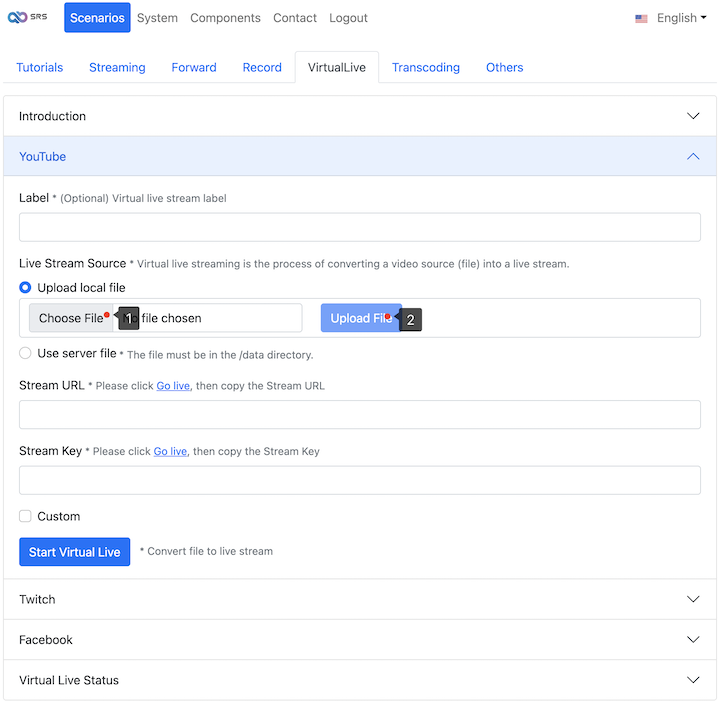
Step 3: Stream file to YouTube
To stream your file to YouTube, copy the Stream URL and Stream key from your YouTube Go live page.
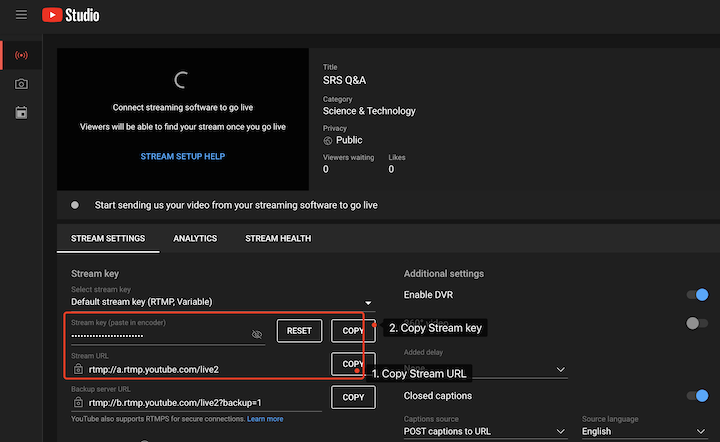
Open the Oryx dashboard and click on Scenarios > VirtualLive > YouTube. And click Start Virtual Live in Oryx.
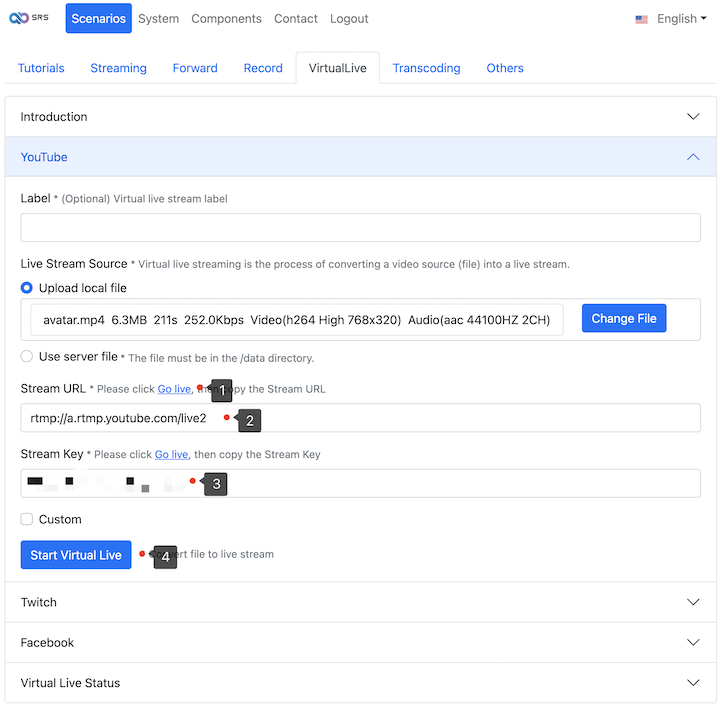
Your stream will now be published on YouTube.
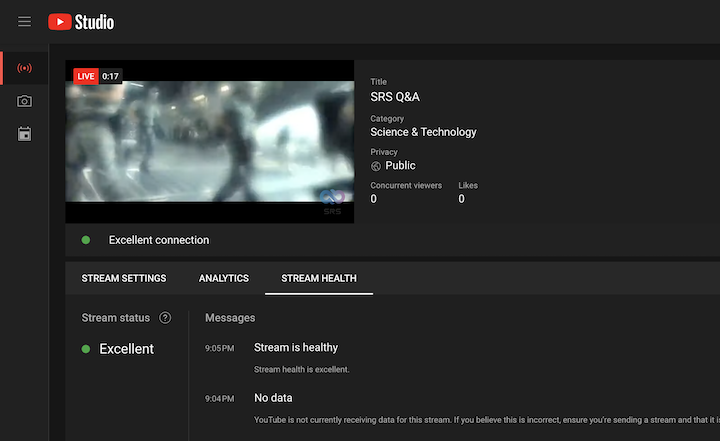
Step 4: Check virtual live status
To monitor the status of your virtual live event, simply check the dashboard. You'll be able to see the status of all your virtual live events, ensuring that everything is running smoothly.
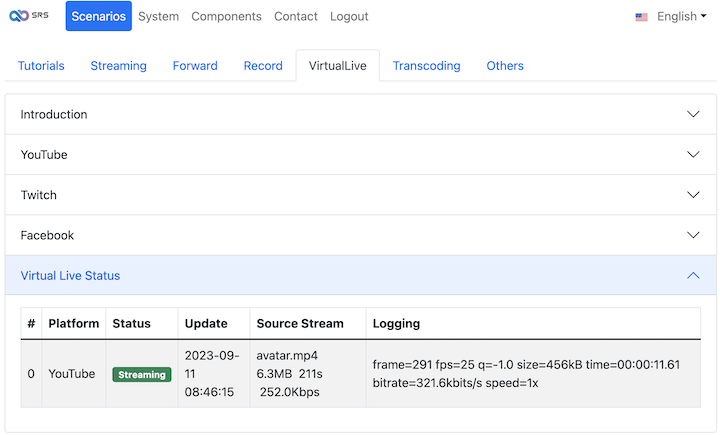
Step 5: Stream file to Twitch
After uploading file, you can stream your file to Twitch, copy the Stream key from your
Twitch Dashboard under Settings > Stream.
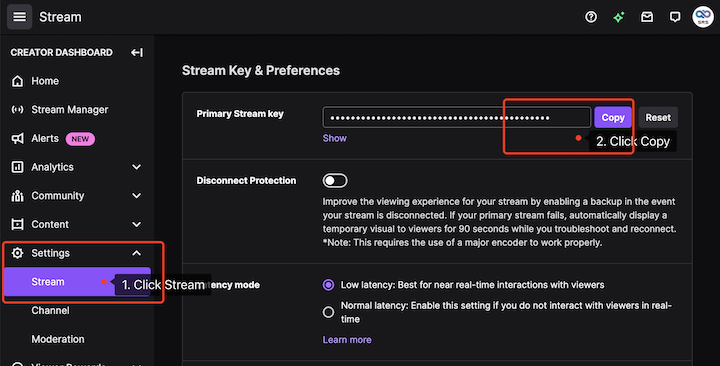
Open the Oryx dashboard and click on Scenarios > VirtualLive > Twitch. Click Start Virtual Live in Oryx.
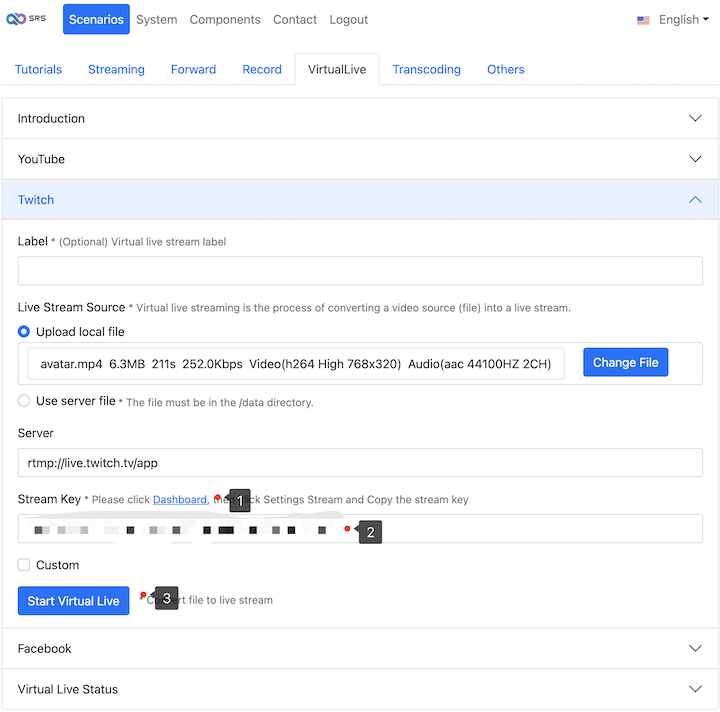
And your stream will be published on Twitch in the Stream Manager.
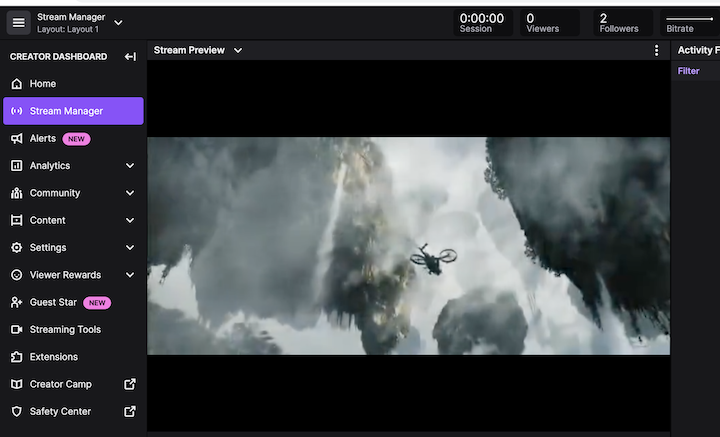
Step 5: Stream file to Facebook
After uploading file, you can stream your file to Facebook, copy the Stream key from your
Facebook Live Producer page,
then click Go live, and select Streaming software.
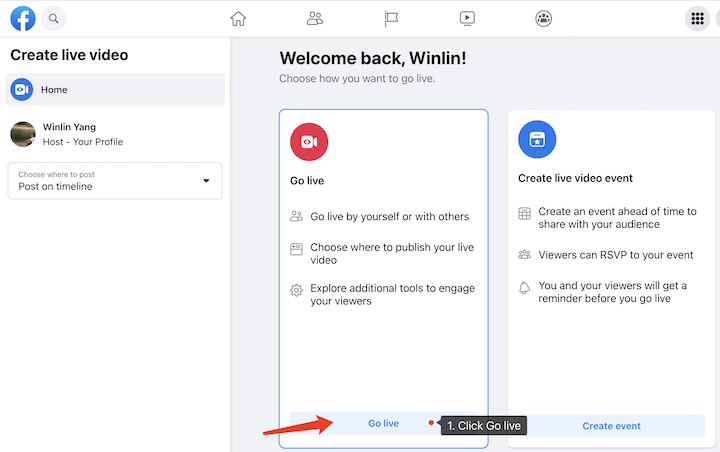
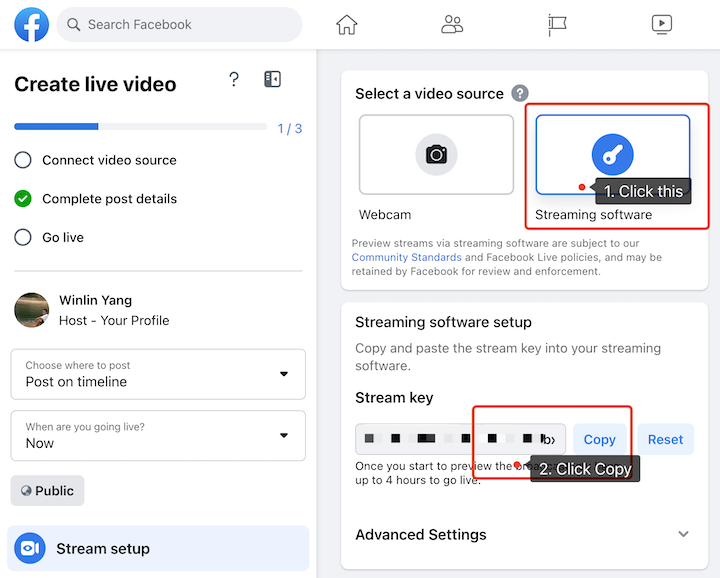
Open the Oryx dashboard and click on Scenarios > VirtualLive > Facebook. Click Start Virtual Live in Oryx, and your stream will be published on Facebook.
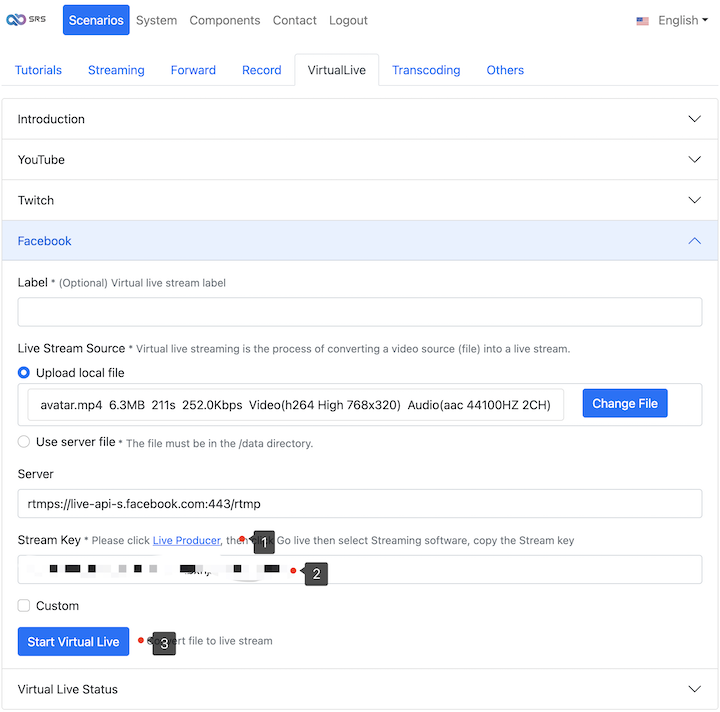
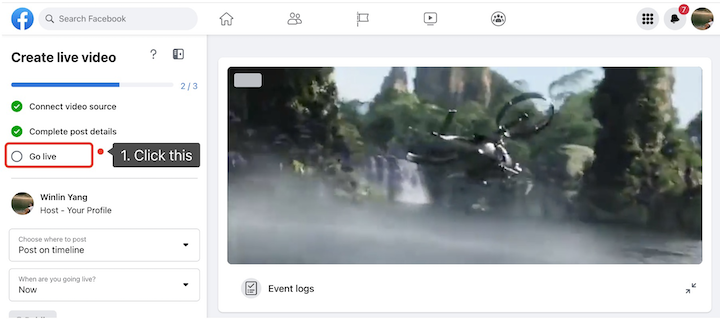
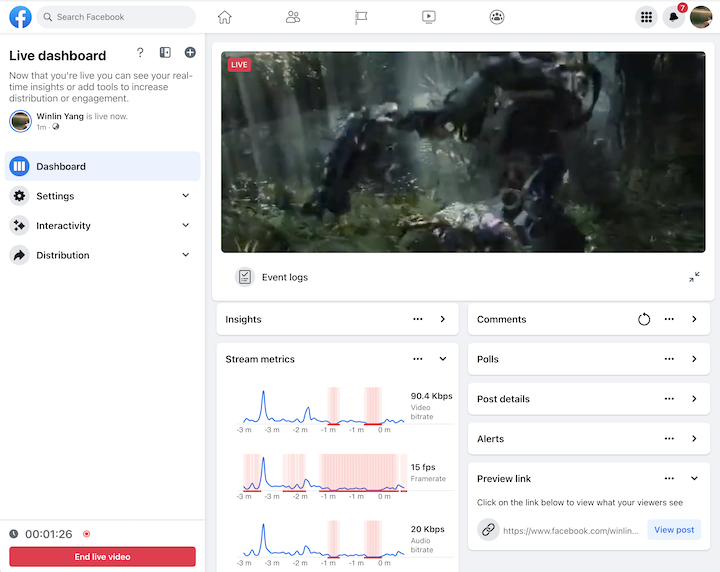
(Optional) Upload Video File by Other Tools
You can also upload the video file to the /data/upload folder using tools like FTP or SCP. After that, choose
Use server file, enter the video file's path, and utilize it as a virtual live source.
This method enables you to upload very large files, particularly when webpage-based uploads fail. By using professional upload tools, you can resume uploads or accelerate the process with multi-threading and other features.
Cloud Service
At SRS, our goal is to establish a non-profit, open-source community dedicated to creating an all-in-one, out-of-the-box, open-source video solution for live streaming and WebRTC online services.
Additionally, we offer a Cloud service for those who prefer to use cloud service instead of building from scratch. Our cloud service features global network acceleration, enhanced congestion control algorithms, client SDKs for all platforms, and some free quota.
To learn more about our cloud service, click here.
Conclusion
In conclusion, virtual live events provide a convenient and efficient way to broadcast pre-recorded content on various platforms, making it more polished and accessible to a wider audience. By reducing anxiety for inexperienced streamers and enabling 24/7 streaming, virtual live events offer numerous possibilities for various industries. Oryx simplifies the process of creating and broadcasting these events, catering to the increasing demand for such interactive experiences in today's fast-paced world.
Contact
Welcome for more discussion at discord.
